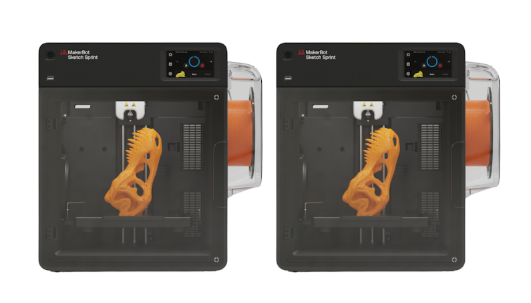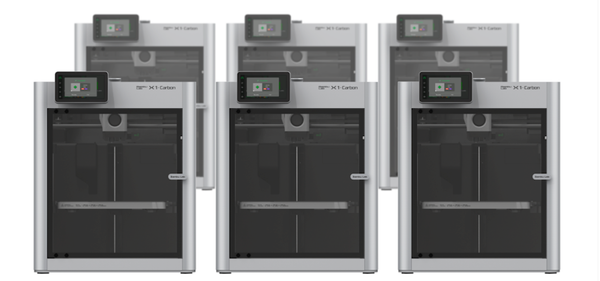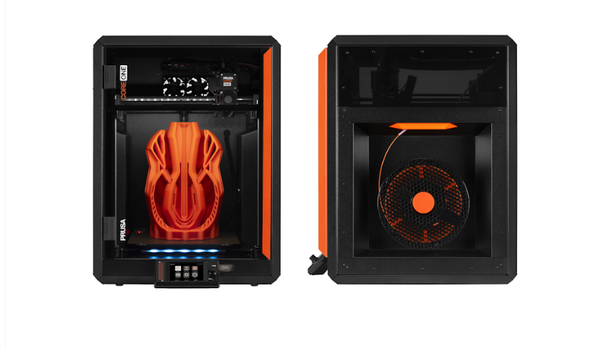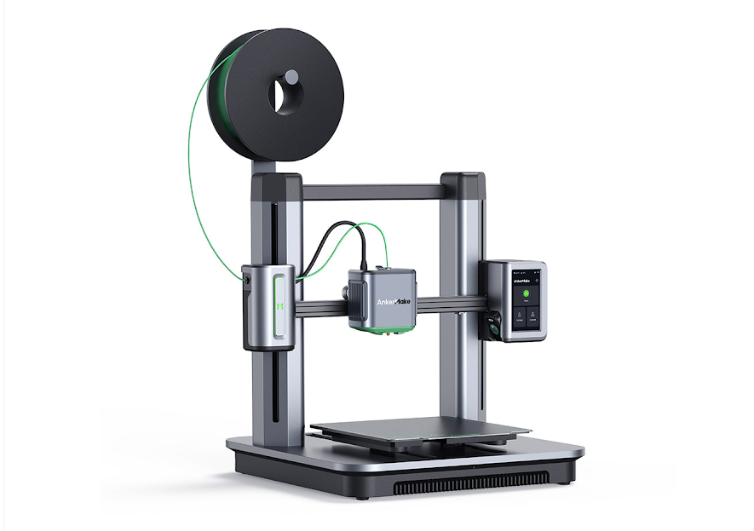MakerBot Sketch Sprint 3D Printer: Fast, Classroom-Friendly Printing

When classroom lessons demand rapid prototyping and reliability, the MakerBot Sketch Sprint 3D Printer delivers. This compact FDM machine is built to streamline educational workflows by offering fast print speeds and an easy -to -manage cloud slicer. Its design and training resources help educators integrate 3D printing into their curriculum without technical headaches.

Why it matters
The adoption of 3D printing in classrooms has accelerated as educators look for hands -on ways to teach design, engineering and problem‑solving. A machine built specifically for education removes the friction of complicated setup and maintenance. The MakerBot Sketch Sprint is designed around educational needs, with features that make it easy to manage student submissions through a cloud -based slicer and digital factory platform.
Providing students with access to reliable prototyping tools encourages creativity and helps them understand manufacturing processes. The Sketch Sprint offers a controlled build environment and integrated training programs, giving teachers confidence that prints will succeed and that students will learn safely. By offering streamlined slicing and print management, the system lets educators focus on teaching rather than troubleshooting equipment.
Key benefits
- Fast classroom prints – The Sketch Sprint can reach up to 250 mm/s (five times faster than many entry level printers), helping classes iterate through projects quickly.
- Generous build volume – A 220 × 220 × 220 mm build area accommodates most educational models without taking up much desktop space.
- Heated plate and robust construction – The heated build plate reaches 110 °C and uses a direct‑drive extruder for dependable prints in PLA and Tough PLA.
- Cloud‑based slicing and management – MakerBot’s Digital Factory allows teachers to queue, monitor and manage prints from anywhere, streamlining classroom workflows.
- Comprehensive training resources – Included certification programs and training materials help educators and students learn additive manufacturing fundamentals at their own pace.
Proof & specs
The Sketch Sprint uses fused deposition modeling (FDM) technology and a single‑extrusion direct‑drive print head. Its build volume of 220 × 220 × 220 mm (8.66 × 8.66 × 8.66 in) provides ample space for educational projects without overwhelming students. Layer resolutions down to 200 microns ensure that printed parts are smooth enough for classroom use. The printer’s heated build plate can reach up to 110 °C and uses a durable 0.4 mm nozzle, which is hardened steel by default with a stainless‑steel option.
Material compatibility is limited to MakerBot PLA and MakerBot Tough PLA filaments with a standard 1.75 mm diameter. This focus on user‑friendly materials reduces the risk of fumes and ensures consistent results. Connectivity options include Wi‑Fi (2.4 GHz and 5 GHz), LAN and USB, making it easy to integrate into school networks. The printer is supplied with the Digital Factory software for cloud slicing and remote management, and it supports Windows, macOS and Chromebooks.
The included kit equips classrooms with everything needed to start printing. Each package comes with one Sketch Sprint 3D printer (or two printers in the Classroom Bundle), two spools of 0.2 kg PLA (blue and orange), a build plate, a spare nozzle and a spool cover. Accessories such as a grease needle, screwdriver, snips and hex key kit are also included. MakerBot’s certification program offers a one‑year warranty, five student certification seats and one teacher certification seat, providing structured learning pathways for educators and students alike.
Not ideal for …
While the Sketch Sprint excels as a classroom tool, it may not be suitable for users who need industrial‑grade materials or multiple extrusion options. Its single‑extrusion setup limits the ability to print with soluble supports or advanced polymers. The 200 micron minimum layer height and relatively small build volume might not meet the precision or size requirements of professional prototyping or production parts. Additionally, the printer is optimized for MakerBot PLA and Tough PLA; those seeking to experiment with engineering‑grade materials like ABS, Nylon or PETG should consider higher‑end machines.
For hobbyists or businesses looking for greater flexibility, features like interchangeable nozzles, higher temperature capabilities or dual extrusion might be worth the investment. However, if your primary goal is to introduce students or entry‑level users to 3D printing with minimal hassle, the MakerBot Sketch Sprint offers a balanced blend of speed, reliability and educational support.



